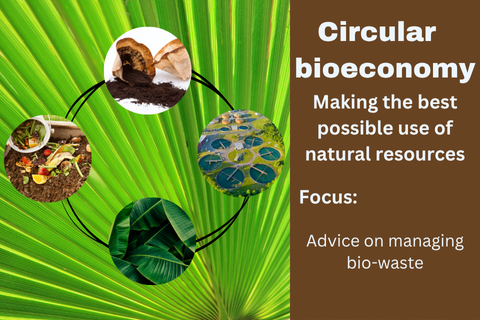Circular bioeconomy: advice on managing bio-waste
The bioeconomy is a hot topic these days, right up at the top of policy agendas. It involves using renewable natural resources as a raw material. The circular bioeconomy introduces circularity into this concept: using what would otherwise be thrown away, using spent biological resources to regenerate ecosystems and minimising waste.
The ECESP website has a good selection of circular bioeconomy-themed content. This series will shine a spotlight on it.
Circular bioeconomy concept: advice on managing bio-waste
The circular bio-waste management handbook for local authorities
CityLoops was a Horizon 2020 project which ran from 2019 to 2023. It focused on circular economy solutions for bio-waste and construction and demolition waste.
It sought to contribute to the further implementation of the circular bioeconomy across Europe. This handbook provides a comprehensive picture of the challenges at hand and practical recommendations for enhancing the circular management of bio-waste.
To make circularity a reality, local authorities must implement solutions and measures to slow, narrow and close biological cycles. These solutions and measures can be categorised based on their environmental benefits, following the waste hierarchy. As such, local authorities should prioritise bio-waste prevention (narrowing), and the redistribution of surplus food (slowing), to prevent it from becoming waste. However, it is important to acknowledge that food waste and garden waste will inevitably be generated. Therefore, local authorities also need to develop bio-waste valorisation (closing), prioritising decentralised treatment, especially home and community composting. In areas where decentralised treatment is unfeasible, such as city centres, separate collection systems and treatment facilities should be established.
The handbook is intended for a diverse audience of local government practitioners, including waste managers, urban planners, environmental protection officers, procurers and politicians seeking a deeper understanding of the subject. It is divided into two main sections: how to implement circularity and enabling circularity, with a specific emphasis on bio-waste and biological cycles.
See the overview of the project.

